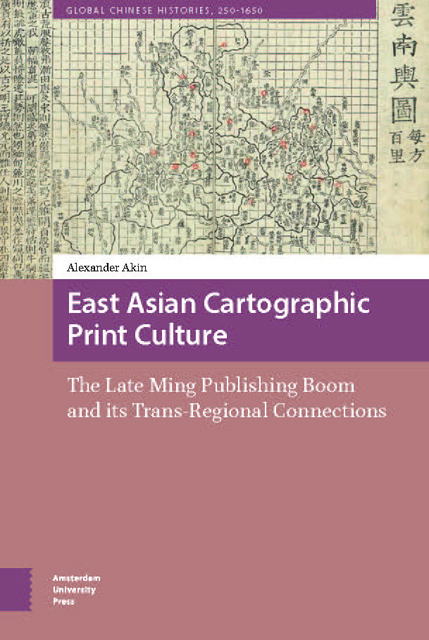 East Asian Cartographic Print Culture
East Asian Cartographic Print Culture Book contents
- Frontmatter
- Table of Contents
- Acknowledgments
- Introduction
- 1 Printed Cartography in the Late Ming: Old Typologies, New Audiences
- 2 Chinese Historical Cartographies: Mapping the Past
- 3 The Jesuits as Participants in the Late Ming Publishing Boom
- 4 Chosŏn Cartography in a Trans-regional Context
- 5 Japanese Cartography between East and West
- Conclusion
- Appendices
- Bibliography
- Index
4 - Chosŏn Cartography in a Trans-regional Context
Published online by Cambridge University Press: 12 January 2023
- Frontmatter
- Table of Contents
- Acknowledgments
- Introduction
- 1 Printed Cartography in the Late Ming: Old Typologies, New Audiences
- 2 Chinese Historical Cartographies: Mapping the Past
- 3 The Jesuits as Participants in the Late Ming Publishing Boom
- 4 Chosŏn Cartography in a Trans-regional Context
- 5 Japanese Cartography between East and West
- Conclusion
- Appendices
- Bibliography
- Index
Summary
Abstract
This chapter examines cartographic exchange and influence between Ming China and the neighboring Chosŏn state. The Tongguk yŏji sŭngnam (Newly Augmented Geographical Survey of the Land of the East) was directly inspired by the Da Ming yitong zhi (Gazetteer of the Great Ming’s Unification). Long before the emergence of a substantial commercial publishing industry, the maps of the Sŭngnam were widely copied in manuscript atlases. The chaotic richness of later Ming works tended to be rejected in Chosŏn, however, in favor of adherence to orthodox precedent. The chapter also discusses the importation of materials into Ming China, examining one such work in detail – the Chaoxian tushuo (Annotated maps of Chosŏn), printed in 1600.
Keywords: Ming, Korea, cartography, Chosŏn, Sinjǔng tongguk yŏji sǔngnam, Chaoxian tushuo
The role of classical Chinese as a written language shared by scholars throughout East Asia meant that books were shared as well. Sometimes they were bestowed as official gifts, sometimes purchased by visiting diplomats, but on a larger scale – albeit one that is difficult to measure – they moved through commercial trade. Such trade sometimes took place directly over the ocean between the mainland and Japan, and sometimes via the Korean peninsula. Ōba Osamu has emphasized the interconnectedness of East Asia in his studies of the ‘Book Road,’ an intellectual reconfiguration of the ‘Silk Road’ that emphasizes not the transfer of wealth, but of knowledge between the Asian mainland and Japan. This transfer of the written word, which Ōba shows was already in full swing by the Tang period (618-907 CE), suggests that when appraising intellectual events in one part of East Asia we should consider influences that affected the region as a whole. Developments in cartography are no exception.
This chapter examines the significance of Ming publishing to cartography in Chosŏn Korea. By this time, Chinese maps had been imported into Korea for centuries through both official and private channels. Such maps even inspired poetry, as Korean readers contemplated their place in a Sinocentric worldview. The Koryo poet Yi Kyubo (1168-1241) responded to a Song map by comparing his peninsula’s small size on the map with its cultural preeminence:
Myriad kingdoms stretch across leaves of paper,
while Samhan is tucked away like a clump of dirt.
But do not belittle it, kind observer,
for in my eyes it seems quite large.
- Type
- Chapter
- Information
- East Asian Cartographic Print CultureThe Late Ming Publishing Boom and its Trans-Regional Connections, pp. 193 - 224Publisher: Amsterdam University PressPrint publication year: 2021


